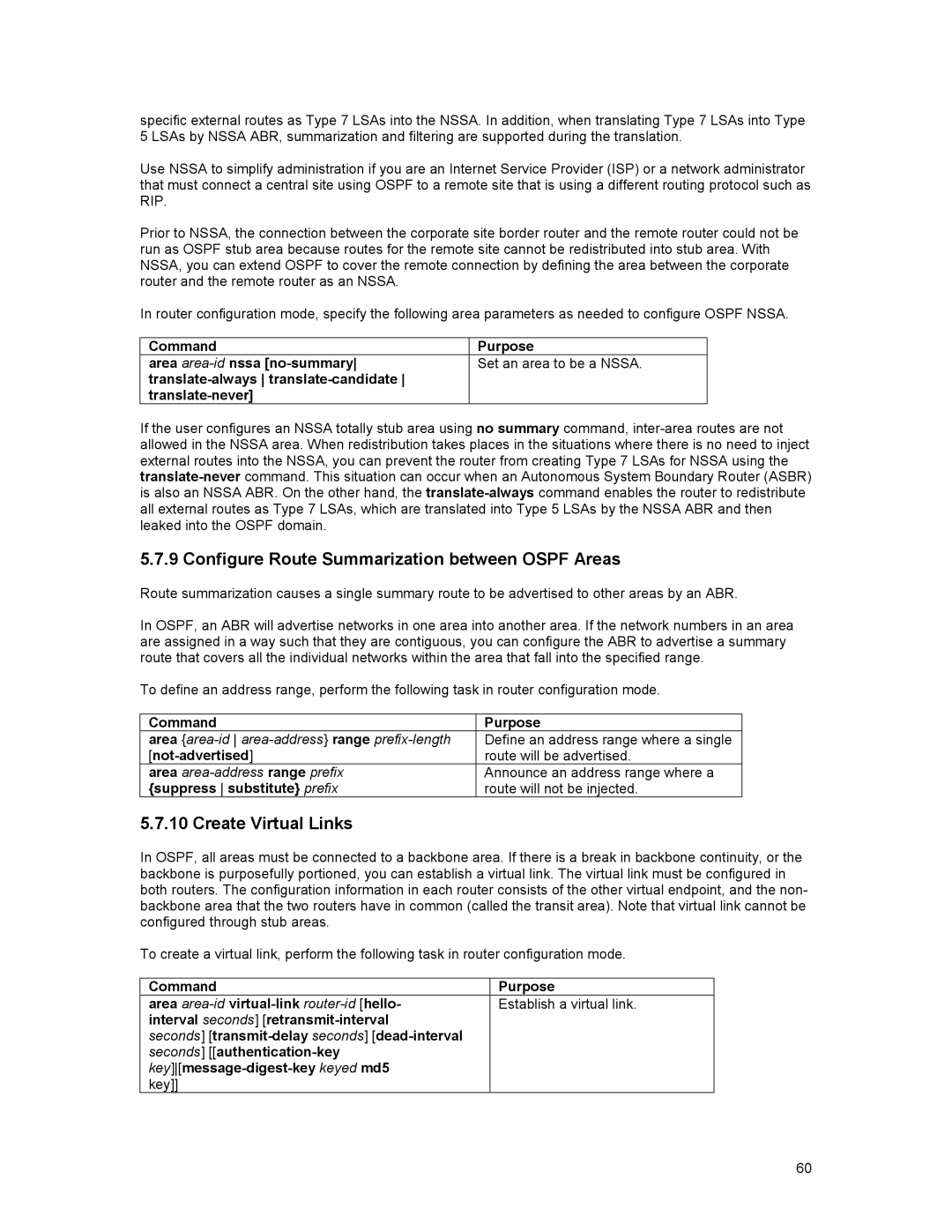specific external routes as Type 7 LSAs into the NSSA. In addition, when translating Type 7 LSAs into Type 5 LSAs by NSSA ABR, summarization and filtering are supported during the translation.
Use NSSA to simplify administration if you are an Internet Service Provider (ISP) or a network administrator that must connect a central site using OSPF to a remote site that is using a different routing protocol such as RIP.
Prior to NSSA, the connection between the corporate site border router and the remote router could not be run as OSPF stub area because routes for the remote site cannot be redistributed into stub area. With NSSA, you can extend OSPF to cover the remote connection by defining the area between the corporate router and the remote router as an NSSA.
In router configuration mode, specify the following area parameters as needed to configure OSPF NSSA.
Command | Purpose |
area | Set an area to be a NSSA. |
| |
|
If the user configures an NSSA totally stub area using no summary command,
5.7.9 Configure Route Summarization between OSPF Areas
Route summarization causes a single summary route to be advertised to other areas by an ABR.
In OSPF, an ABR will advertise networks in one area into another area. If the network numbers in an area are assigned in a way such that they are contiguous, you can configure the ABR to advertise a summary route that covers all the individual networks within the area that fall into the specified range.
To define an address range, perform the following task in router configuration mode.
Command | Purpose |
area | Define an address range where a single |
| route will be advertised. |
area | Announce an address range where a |
{suppress substitute} prefix | route will not be injected. |
5.7.10 Create Virtual Links
In OSPF, all areas must be connected to a backbone area. If there is a break in backbone continuity, or the backbone is purposefully portioned, you can establish a virtual link. The virtual link must be configured in both routers. The configuration information in each router consists of the other virtual endpoint, and the non- backbone area that the two routers have in common (called the transit area). Note that virtual link cannot be configured through stub areas.
To create a virtual link, perform the following task in router configuration mode.
Command | Purpose |
area | Establish a virtual link. |
interval seconds] |
|
seconds] |
|
seconds] |
|
| |
key]] |
|
60
